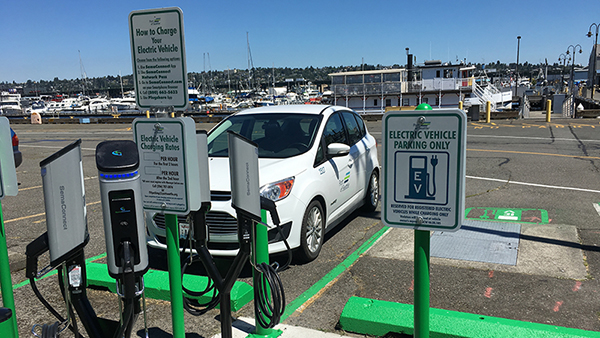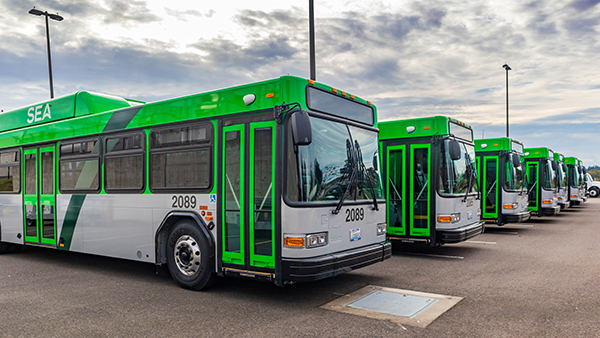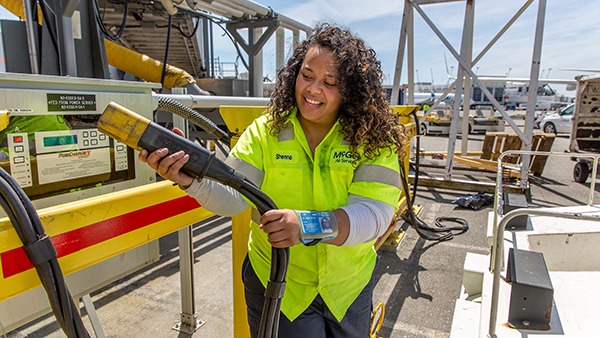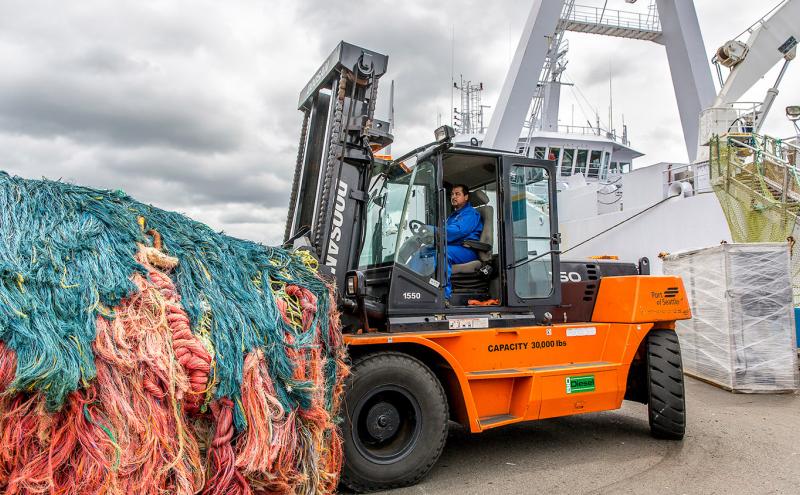
National Drive Electric Week, September 23 to October 2, 2022, is a nationwide celebration of the benefits of all-electric and plug-in hybrid cars, trucks, and motorcycles. Benefits include:
- Instant torque allowing you to quickly speed up and merge onto the freeway
- $1.24 per eGallon (U.S. Average)
- Latest technology such as driver assist lane tracking, emergency braking, and over-the-air updates
- Less maintenance
- Safer. EVs are ten times less likely to catch fire than conventional cars
- And, of course, they’re better for the environment, even when accounting for their manufacturing carbon emissions and when using electricity from coal plants
(Source: Drive Electric Week)
EVs at the Port

Because the Port of Seattle is committed to being the greenest and most energy-efficient port and airport in North America, electric vehicles have been used at Port facilities for years. For example, the Port’s fleet includes electric vehicles driven at and between Port locations. And even on the SEA Airport airfield, electric vehicles provide ground support for airplanes.
The Port’s Century Agenda is the long-term strategic plan that has guided investments and accountability in environmental programs. In 2017, the Port Commission adopted greenhouse gas (GHG) reduction targets to:
- Reduce emissions from Port-owned or controlled sources (Scope 1 and 2) by 50% by 2030
- Be carbon neutral or carbon negative by 2050
Greener fleet

The Port relies on fleet vehicles and equipment to transport employees, passengers, and supplies, maintain properties and assets, and keep operations running smoothly. They’re critical to operations, but vehicles require fossil fuels which contributes Greenhouse Gas (GHG) emissions. Fuel-powered vehicles in the Port’s Fleet accounts for 22 percent of total Port-wide Scope 1 and 2 GHG emissions.
Through a process called right-sizing, the Port replaces existing fleet vehicles with newer, reliable, more fuel-efficient options that can perform the same function. For example, replacing a larger vehicle such as a pickup truck with a smaller electric or hybrid sedan or SUV can save money and lower fuel consumption.
The Port is actively working to reduce fleet emissions by:
- Dispensing 20 percent biodiesel blend (B20) at Maritime sites since 2008
- Fueling all maritime and SEA Airport diesel vehicles with renewable diesel since 2018
- Dramatically reducing emissions for the fleet of 44 buses at SEA Airport (the largest source of fleet GHG emissions) by powering them with renewable natural gas (RNG)
- Adopting a green fleet policy in 2008 and switching most diesel- powered vehicles to biodiesel
- Purchasing hybrid sedans and SUVs for the Port fleet; these will all be converted to electric vehicles by 2030
SEA Airport electric ground support equipment
In 2014, the Port of Seattle, Alaska Airlines, and Western Washington Clean Cities installed nearly 600 electric charging stations throughout the airport to convert ground service equipment (GSE) such as baggage tugs, bag ramps, and pushback vehicles from fossil fuel to electric. Alaska Airlines took the lead and provided 204 electric vehicles to debut the project. Each year the project saves the greenhouse gas emissions equivalent of taking 1,900 cars off the road.

Green machines
These planned upgrades to SEA Airport and maritime fleets could reduce approximately 4,600 metric tons of CO2e by 2030. If these projections are accurate, the emissions reductions would exceed the established targets for the Century Agenda of reducing GHG by 50 percent.
The projects that best reduce emissions are converting the SEA Airport bus fleet to RNG, switching fossil diesel to Renewable Diesel, and replacing existing vehicles with more efficient vehicles or electric vehicles
The changes to the maritime fleet show an opportunity to reduce emissions by over 600 metric tons of CO2e by 2030, with the bulk of those reductions achieved by replacing fossil diesel with RD and converting sedans to EVs.
Help by driving electric
We’re all in this together and know that you want to do your part. Port facilities have charging stations for electric vehicle drivers.
SEA Airport
The parking garage at SEA Airport offers 48 electric vehicle parking spaces with free electric vehicle charging for parking customers on a first-come, first-served basis.
Keep an eye out for spaces marked with green striping and are designated as "Electric Car Charging Only.” Remember to bring your own cord. SEA Airport electrical stalls are 120 Voltage and are located throughout the airport:
Floor 5, General Parking:
Thirty-six (36) spaces available
There are twelve spots in each row at D, G, and I
General Parking rates apply
Floor 4, Terminal Direct Parking:
Twelve (12) parking spaces are located in Row I
Terminal Direct rates apply
SEA Cell Phone Lot:
Two Level 3 (fast-charging) stations
Port Maritime facilities
Electric vehicle charging stations have been installed and used at Port maritime facilities since 2018:
- Fishermen’s Terminal has four electric vehicle charging stations for use by travelers, customers, tenants, and employees
- Shilshole Bay Marine has eight charging stations; and
- Port of Seattle Marine Maintenance has Level 2 chargers
Thank you for doing your part. And the Port will keep doing ours.









